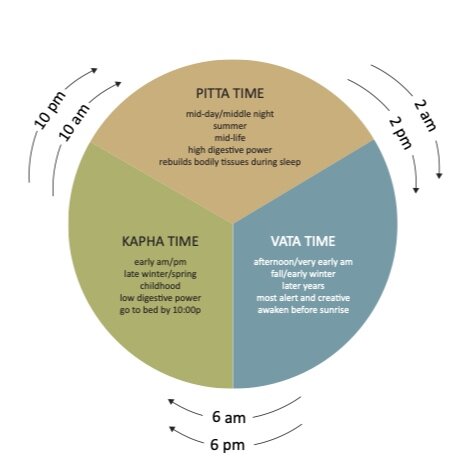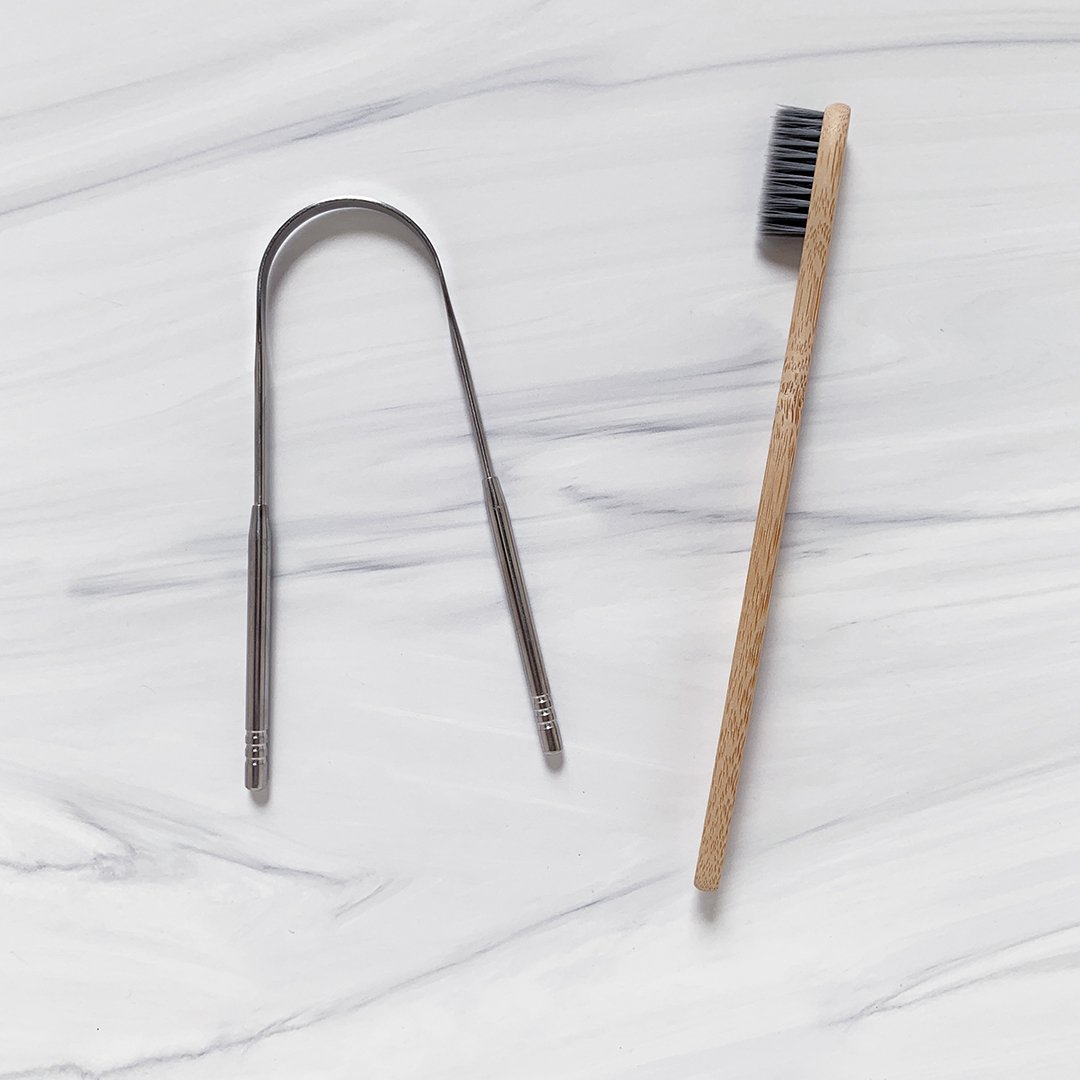the ayurvedic clock
how the Ayurvedic clock supports your wellness
Much of Ayurveda is bringing our own internal, micro-environment into balance with the external, macro-environment we call Nature. One of the most profound ways that we do this is by aligning our own circadian rhythms and biological clocks with that of Nature. Wake/sleep times, meal times, times of activities, and the gunas, or qualities, that will most influence us will all be informed by the doshic influence of the Ayurvedic clock.
Developing and practicing a dinacharya, or daily routine, helps to regularize the circadian rhythm, aid digestion, absorption, assimilation, hormone production, immune function; and generates self-esteem, discipline, peace, and longevity. This is where the Ayurvedic clock comes in handy.
the Ayurvedic clock and the doshas
This clock is one that illustrates a 24-hour day, yearly seasons, and the three phases of life.
Kapha time rules the hours of the early morning and early evening (6a-10a + 6p-10p). Seasonally, Kapha time is late winter and spring, and time of life is childhood. During Kapha time, the qualities of Kapha tend to predominate, leading to low digestive power, stagnation, heaviness, and dullness.
Pitta time of day is mid-day and middle of night (10a-2p, 10p-2a), the season of summer, and middle of life. Pitta’s hot, sharp, and spreading qualities yield high digestive power and a greater sense of capacity to do our work, especially mental work, of the day.
Vata dosha is predominant in the afternoon and very early morning (2p-6p, 2a-6a), during fall and early winter, and in the later stages of life. This is the time when we can get light and spacey, where our digestive capacity is poor, and a desire for movement and creativity abound.
how to work with the clock
Ayurveda understands that:
Like increases like. Opposites balance.
During the seasons, time of day, or time of life, the indicated dosha is more predominant and more easily pushed out of balance. With this in mind, we can organize our day so that our activities and practices take place at an ideal time.
Here are some things to consider when organizing your day to be in alignment with the Ayurvedic clock.
Food Practices:
Aim to eat your biggest meal of the day for lunch, when digestive fire is strongest. Landing this meal between 10a-2p is ideal as this is when the body is most ready to digest and assimilate.
Wake/Sleep Times:
Rising by 6a helps to start your day off right. If oversleeping occurs, it becomes much more difficult to wake, as you are now trying to wake up during the heavy, dull time of Kapha. Waking with clarity and lightness helps to get you started on the right foot.
Go to sleep by 10p. Around 10p we transition from Kapha time to Pitta time. If we aren’t mindful of following the wave of Kapha to bed, we may begin to use the fiery energy of Pitta externally (organize the closet! achieve inbox zero!) instead of the internal detoxification and healing work that nighttime Pitta is meant to do.
Hygiene + Wellness Practices:
Consider tongue scraping, eye washing, or oil pulling as part of your morning rituals.
Prayer, asana, pranayama, meditation can serve to anchor you throughout your day. Try to land these practices early in the morning during Vata time of day for most benefit.
Nasya is a great precursor to any breath work or when the mind needs grounding.
Establish regular meal times.
Spend time in nature.
Practice abhyanga.
remember
The Ayurvedic clock serves as a tool to help us build a healthy relationship between our internal environment, and that of the outside world. It serves as a mechanism to inform us on our activities and practices throughout each day, time of year, and time of life. It’s purpose as a way to inform us and remind us of how to stay in balance is both invaluable and timeless.
related products
related posts
loved what you learned? feeling inspired? share this article with someone who would benefit!
you can also share via the social icons below.














